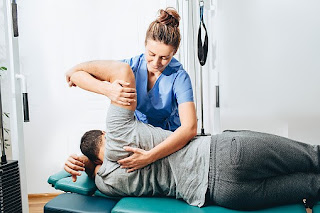Physical Therapy to Improve Strength and Conditioning
Athletes always seek that competitive edge. Competitive athletics can be a lot more fun if you are a bit faster, stronger, and have better endurance. Many games and races come down to last-second plays and photo finishes. Many physical therapy clinics now offer strength and conditioning clinics to all levels of athletes, from high school footballers to major league baseball players. This helps individuals to reduce injury risk and increase their strength, endurance, and strength. Modern sports medicine includes preventative methods that allow athletes to stretch properly and train correctly in order to avoid common injuries like sprains or strains.
Conditioning is a way to prevent injury and improve athletic performance. It is not enough to simply take to the court or field and be in peak condition for the season. The most difficult conditioning for athletes is done before the start of each season. Training programs can improve agility, speed, balance, strength, explosiveness and stability by using the help of strength and conditioning coaches and physical therapists. Athletes can be trained by coaches and therapists to improve their ability to perform in specific sports activities.
Although physical therapy is often thought of as something that happens after an injury, surgery or other type of injury, research and tests have shown that physical therapy can also be used to prevent injuries and prepare the body for the demands of athletics. Trainers and coaches use proprioception to decrease an athlete's reaction speed to adverse situations. This helps to minimize injuries like ankle sprains or knee sprains. A football player's ability to respond quickly to an approaching tackler is a better predictor of his success in avoiding being hit. The less you take in a game, the lower your chances of getting hurt Physical Therapy Newyork.
The benefits of physical therapy include the ability to improve strength and endurance, as well as reducing injury risk through proper stretching and multi-directional agility training.




Comments
Post a Comment